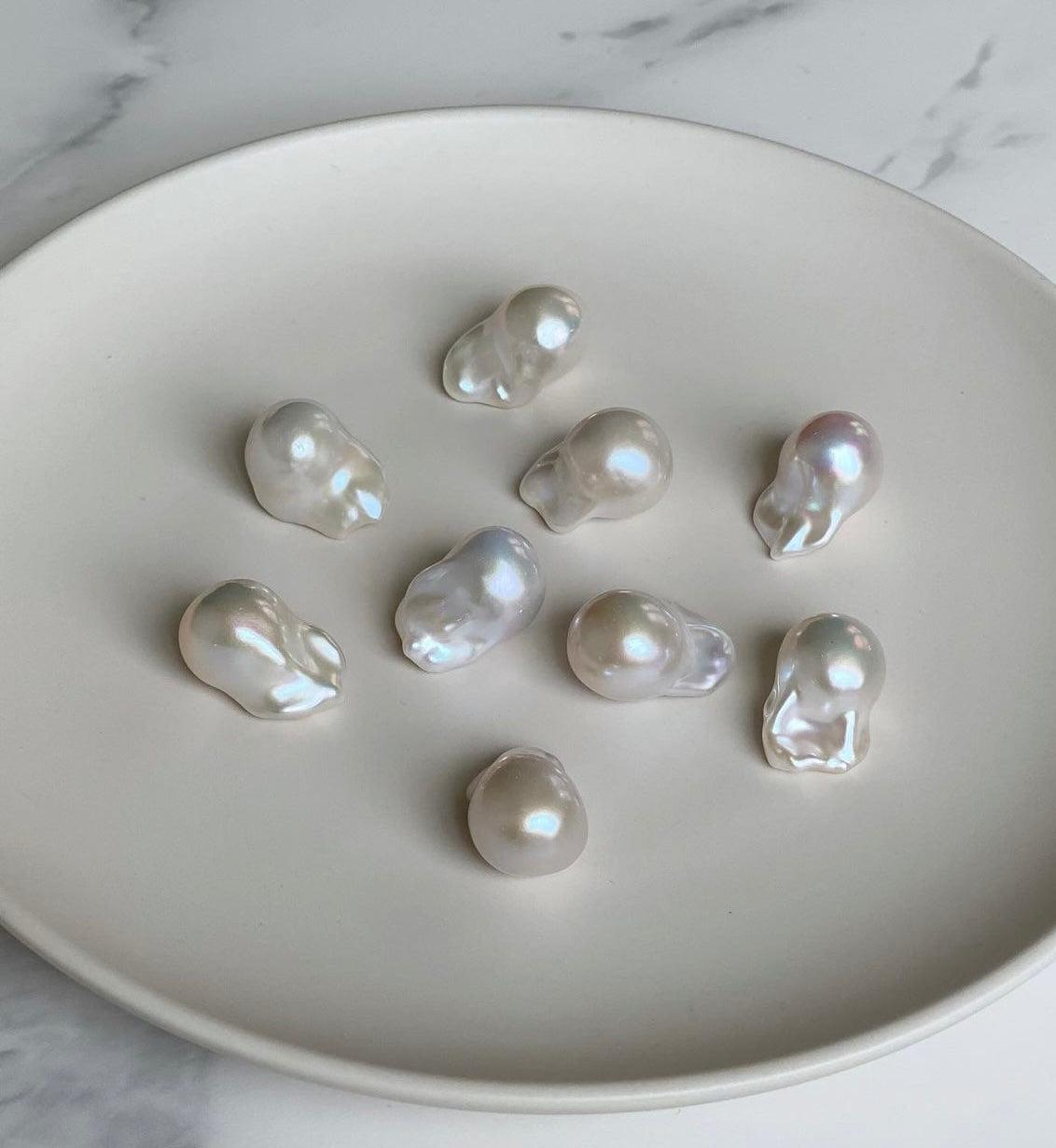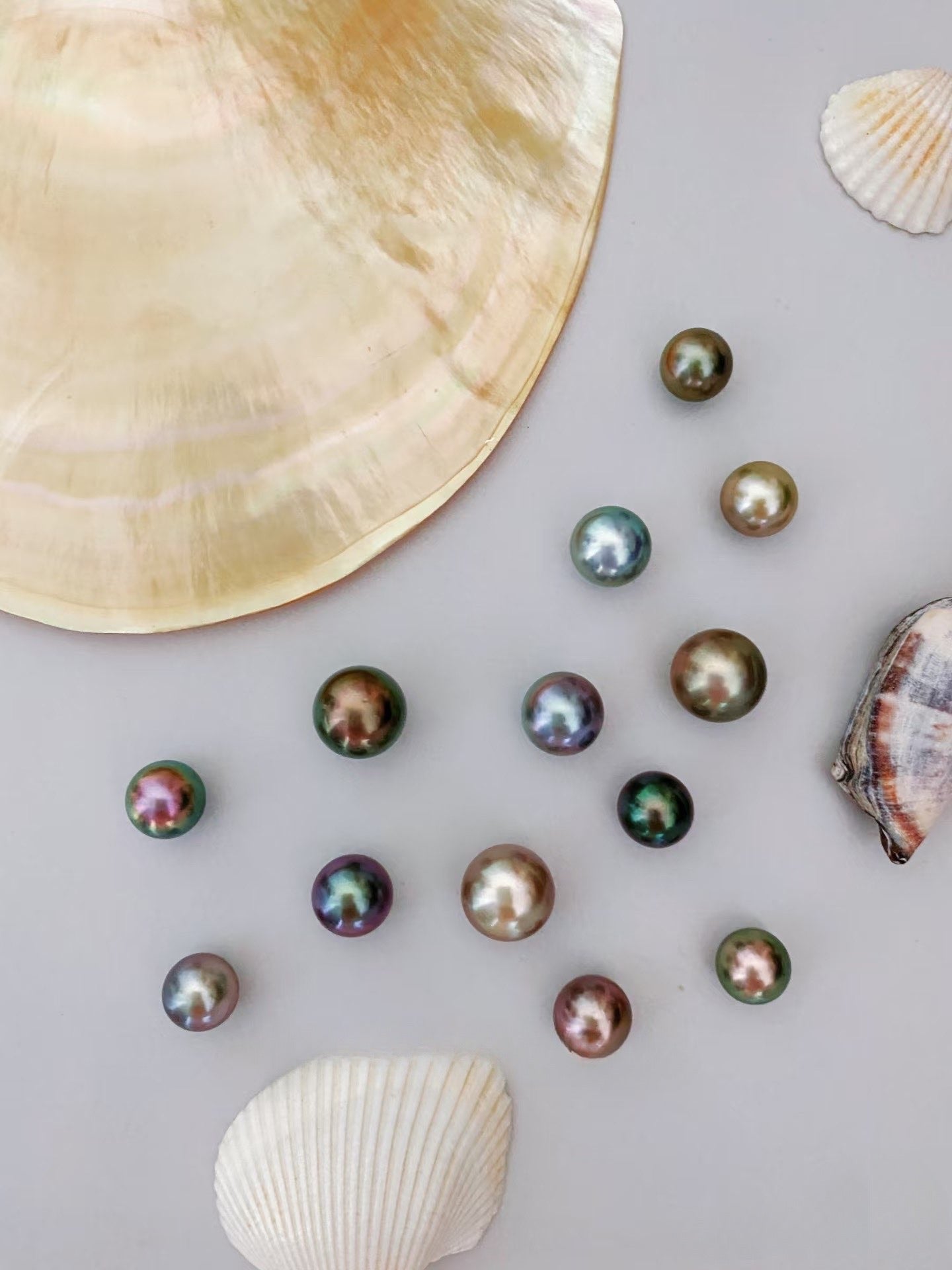FAQs
General

What is the typical delivery time?
At Pearl Almanac, we strive to provide our customers with a seamless and efficient shipping experience.
Standard shipments within the European Union typically take between 5-8 business days. For customers based in the Netherlands, delivery times can be even faster. Please note that some items may not be in stock in our Netherlands warehouse, in which case we will import them directly from our jewelers in Asia, resulting in a longer delivery time.
For customers based in or near Amsterdam, we offer the option to collect your item or arrange for a personalized delivery.
Further information on our shipping policy can be found here.
Do you make custom jewelry?
Yes, we can create customized jewelry pieces to meet your individual preferences.
If you have a specific design in mind, such as a different color or metal type, please don't hesitate to contact us. We will work closely with you to bring your vision to life. To discuss your bespoke jewelry requirements, simply send us a message, and we will respond with a personalized proposal.
Please note that customized products are exempt from our return policy.
What happens if the item I want is out of stock?
We take great pride in offering unique, one-of-a-kind designs created by our talented designers and jewelers. As pearls are natural products, some items may be limited in availability.
If an item is sold out, we might not be able to reproduce it identically. However, if you're interested in a sold-out product, please contact us, and we will do our best to offer a similar, yet unique alternative, which will be specially manufactured for you.
Which countries do you ship to?
Currently, we only ship to countries within the European Union (EU) and European Economic Area (EEA) due to the complexities of international shipping, returns, and customs regulations.
However, if you're based outside the EU or EEA and have found something that interests you, please don't hesitate to contact us via our contact form, and we will provide you a solution.
What is your return and refund policy?
We offer a 30-day return policy, which allows you to request a return within 30 days of receiving your item.
More information on our return and refund policy can be found here.
Can I request photos or videos of my pearls before buying?
Absolutely! We're more than happy to provide additional photos and short videos to help you select the perfect pearls.
To request images, please email us at info@pearlalmanac.com with details about the product you're interested in, as well as any specific requirements you may have, such as indoor or outdoor shots, close-ups, or other preferences.
Understand your Pearls

How to tell Fake and Real Pearls?
To verify the authenticity of pearls, look for signs such as the presence of imperfections, the weight of the pearl, and the way it feels against the skin.
A useful tip is to gently rub the pearl against your teeth; if it's genuine, it should feel slightly rough, similar to sandpaper. In contrast, artificial pearls tend to be smooth.
What is Wild, Cultured, and Keshi Pearls?
Wild pearls are formed spontaneously, without any human intervention, whereas cultured pearls are created with the assistance of a pearl farmer who inserts a shell or bead into the oyster to stimulate the production of nacre. As a result, cultured pearls are more affordable and widely available than their wild counterparts.
Notably, less than 1% of pearls currently on the market are wild pearls.
It's worth mentioning that Keshi pearls, which are a by-product of cultured pearl production, can be considered "wild" in the sense that they are not intentionally cultivated.
What are Freshwater and Saltwater Pearls?
Freshwater pearls are the most common and affordable variety; high-quality freshwater cultured pearls, such as Edison pearls are known for being nearly round and having a high, metallic luster due to bead-nucleation techniques, which is mainly produced in China. Additionally, nearly round non-Nucleus freshwater pearls are also rare and costly to produce.
The most common names for Saltwater pearls are Akoya, South Sea, Tahitian, and Sea of Cortez pearls, each named after the specific oysters or regions where they are cultivated.
Akoya pearls are typically small, white pearls from Japan and China, while South Sea pearls are large, white or golden pearls from regions like Australia and the Philippines.Tahitian pearls are known for their naturally dark colors, and Sea of Cortez pearls are found in the Sea of Cortez, Mexico.
How to Price a Pearl?
Seven key factors - luster, surface quality, shape, color, size, origin, and matching.
While luster can account for up to 60% of the value, it's essential to understand the quality level of the product. For instance, at Pearl Almanac, products are categorized into four levels of luster (from aurora to low) and surface quality (from clean to blemish), with additional information about the pearl's origin, color, and size provided to help you gauge the quality level.
What do Pearls Luster come from?
A pearl's luster is made from layers of nacre, which is the same material that forms the inside of a mollusk's shell.
- Layered structure: Nacre is formed in thin, alternating layers of calcium carbonate crystals and conchiolin, resembling a brick wall or an onion.
- Light interaction: Light enters the nacre layers, reflects and refracts off these many surfaces, and then bounces back to the viewer's eye, creating the pearl's characteristic bright, glossy, and sometimes iridescent shine.
- Thickness matters: A thicker nacre layer allows more light to travel through and reflect, resulting in a more intense and radiant luster.
How are Pearls formed naturally?
Pearls are formed inside the soft tissue of a living shelled mollusk through a process of nacre secretion and layering in response to an irritant.
In the wild, a small organic tissue may accidentally enter the oyster, triggering the defense mechanism. For cultured pearls, a tissue or nucleus is intentionally inserted by a human to provoke the oyster's defense response, which then covers the intruder with layers of natural nacre.
Pearl Care Guide

What is there to watch when wearing pearl jewelry?
Cultured pearls are relatively soft and require extra care to maintain their luster and beauty. To keep your pearls looking their best, follow these key tips:
- Apply makeup, perfume, and hairspray before putting on your pearls to prevent damage from these substances
- Gently wipe your pearls with a soft, dry cloth after each use, and occasionally dampen the cloth with water for a deeper clean
- Avoid using abrasive soaps or chemicals, as they can damage the pearls
- Refrain from wearing your pearls during sports or activities that cause excessive sweating, as this can also damage the pearls
How do I care for my pearl jewelry?
To care for your pearl jewelry, it's essential to avoid exposing it to harsh chemicals or extreme temperatures, as these can damage the pearls.
Store your pearls separately from other jewelry to prevent scratching, and clean them gently with a soft cloth and mild soap.
Avoid using ultrasonic cleaners or steam cleaners, as these can also damage the pearls.
By following these simple care tips, you can help extend the life of your pearl jewelry and keep it looking its best.
Is it safe to wear my pearl jewelry in the shower or pool?
It's generally NOT recommended to wear pearl jewelry in the shower or pool, as the chlorine and other chemicals in the water can damage the pearls.
Chlorine, in particular, can cause the pearls to become brittle and prone to cracking. If you do choose to wear your pearls in the water, make sure to rinse them thoroughly with clean water afterwards to remove any residual chemicals.
However, to be on the safe side, it's best to avoid wearing your pearls in the shower or pool altogether.
How should I store my pearl jewelry and make them last longer?
To store your pearl jewelry, wrap each piece individually in a soft cloth or pouch to prevent scratching.
Store your pearls in a cool, dry place away from direct sunlight, as sunlight can cause the pearls to become discolored or faded.
Avoid storing your pearls in a humid or damp environment, as this can cause the pearls to become damaged or discolored.
By storing your pearls properly, you can help extend their life and keep them looking their best.
Can I wear my pearl jewelry every day?
Yes, you can wear your pearl jewelry daily, as it benefits from the natural oils of your skin, which help maintain its luster and moisture, but you should always remove pearls before activities involving water, chemicals, makeup, or excessive sweat.
Can I get my pearl jewelry repaired or restrung?
Yes, most pearl jewelry can be repaired or restrung by a professional jeweler. However, the cost and feasibility of repair will depend on the type of pearl and the extent of the damage.
If your pearl jewelry becomes damaged, it's essential to take it to a reputable jeweler who specializes in pearl repair. They can assess the damage and provide you with a quote for the repair.
By having your pearl jewelry repaired or restrung, you can help extend its life and keep it looking its best.